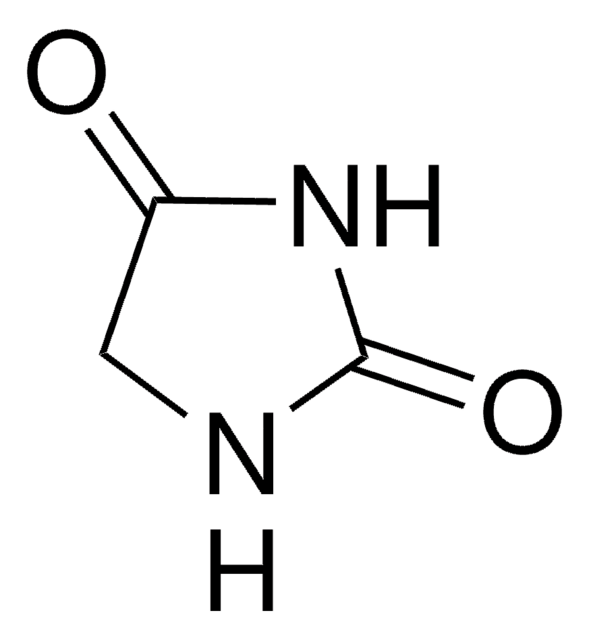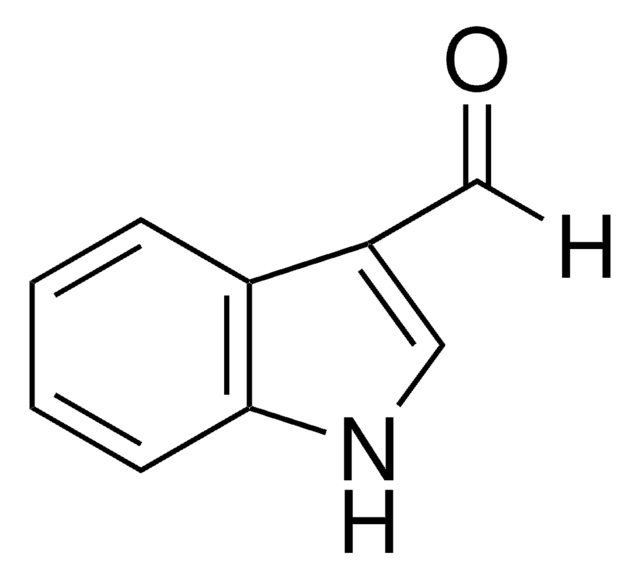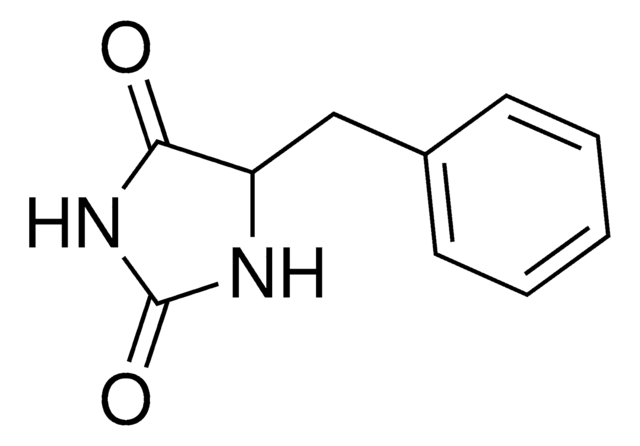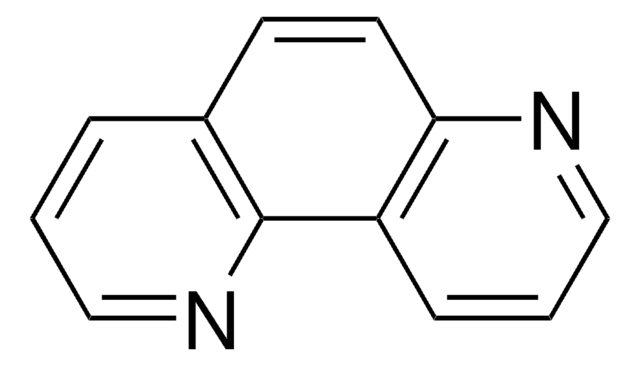M49887
1-Methylhydantoin
97%
Sinónimos:
1-Methylimidazolidine-2,4-dione, Dioxy-creatinine, NSC 80560
Iniciar sesiónpara Ver la Fijación de precios por contrato y de la organización
About This Item
Fórmula empírica (notación de Hill):
C4H6N2O2
Número de CAS:
Peso molecular:
114.10
Número CE:
Número MDL:
Código UNSPSC:
12352100
ID de la sustancia en PubChem:
NACRES:
NA.22
Productos recomendados
Nivel de calidad
Ensayo
97%
mp
156-157 °C (lit.)
cadena SMILES
CN1CC(=O)NC1=O
InChI
1S/C4H6N2O2/c1-6-2-3(7)5-4(6)8/h2H2,1H3,(H,5,7,8)
Clave InChI
RHYBFKMFHLPQPH-UHFFFAOYSA-N
Categorías relacionadas
Aplicación
Reactant for organocatalytic tandem three component reactions of aldehyde, alkyl vinyl ketone, and amide
Reactant for synthesis of:
Reactant for synthesis of:
- Selective angiotensin II AT2 receptor agonists with reduced CYP 450 inhibition
- Allosteric glucokinase activators
- Hydantoin derivatives with antiproliferative activity
- Thiohydantoins
- P2X7 receptor antagonists
Código de clase de almacenamiento
11 - Combustible Solids
Clase de riesgo para el agua (WGK)
WGK 3
Punto de inflamabilidad (°F)
Not applicable
Punto de inflamabilidad (°C)
Not applicable
Equipo de protección personal
Eyeshields, Gloves, type N95 (US)
Elija entre una de las versiones más recientes:
¿Ya tiene este producto?
Encuentre la documentación para los productos que ha comprado recientemente en la Biblioteca de documentos.
K Ienaga et al.
Biochimica et biophysica acta, 967(3), 441-443 (1988-12-15)
The metabolic pathway of 1-methylhydantoin (2) via 5-hydroxy-1-methylhydantoin (3), methylparabanic acid (4) and N5-methyloxaluric acid (5) proved to be a major and general one in mammals. Hence the formation of (3), which has not been detected in normal tissue, is
Bo Yang et al.
Renal failure, 29(8), 1025-1029 (2007-12-11)
1-Methylhydantoin is produced by bacterial creatinine deaminase in the intestinal tract of uremic patients and retaken up into the body. The present study was designed to explore the toxic effect of 1-methylhydantoin on renal proximal tubular cells in vitro. HK-2
M W Sundberg et al.
Clinical chemistry, 29(4), 645-649 (1983-04-01)
We developed a thin-film enzymic assay for creatinine that makes use of creatinine iminohydrolase (EC 3.5.4.21) to convert creatinine to N-methylhydantoin and ammonia. The ammonia diffuses through a semipermeable layer and is quantitated by reaction with bromphenol blue. A paired
Hybrid biosensor for clinical and fermentation process control.
I Karube et al.
Annals of the New York Academy of Sciences, 434, 508-511 (1984-01-01)
J M Kim et al.
Biochemical and biophysical research communications, 142(3), 1006-1012 (1987-02-13)
A new enzyme, N-methylhydantoin amidohydrolase, was highly purified from Pseudomonas putida 77: it catalyzes the hydrolysis of N-methylhydantoin to N-carbamoylsarcosine with the concomitant stoichiometric cleavage of ATP to ADP and orthophosphate. The enzyme absolutely requires ATP, MG2+ and K+ for
Nuestro equipo de científicos tiene experiencia en todas las áreas de investigación: Ciencias de la vida, Ciencia de los materiales, Síntesis química, Cromatografía, Analítica y muchas otras.
Póngase en contacto con el Servicio técnico








